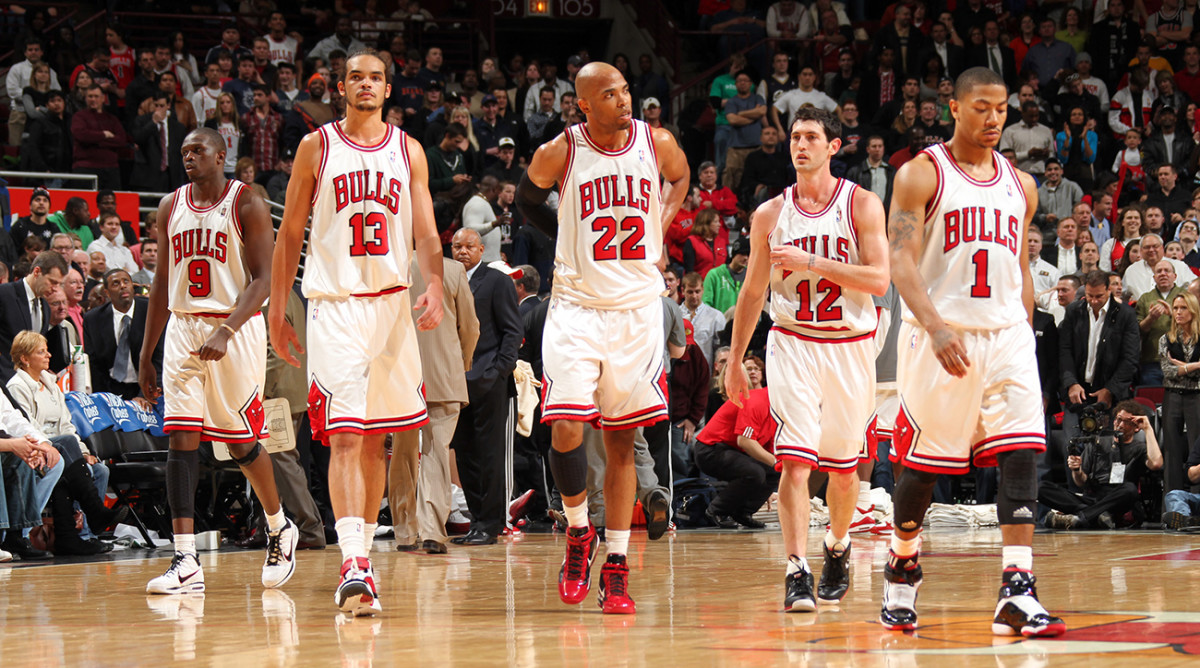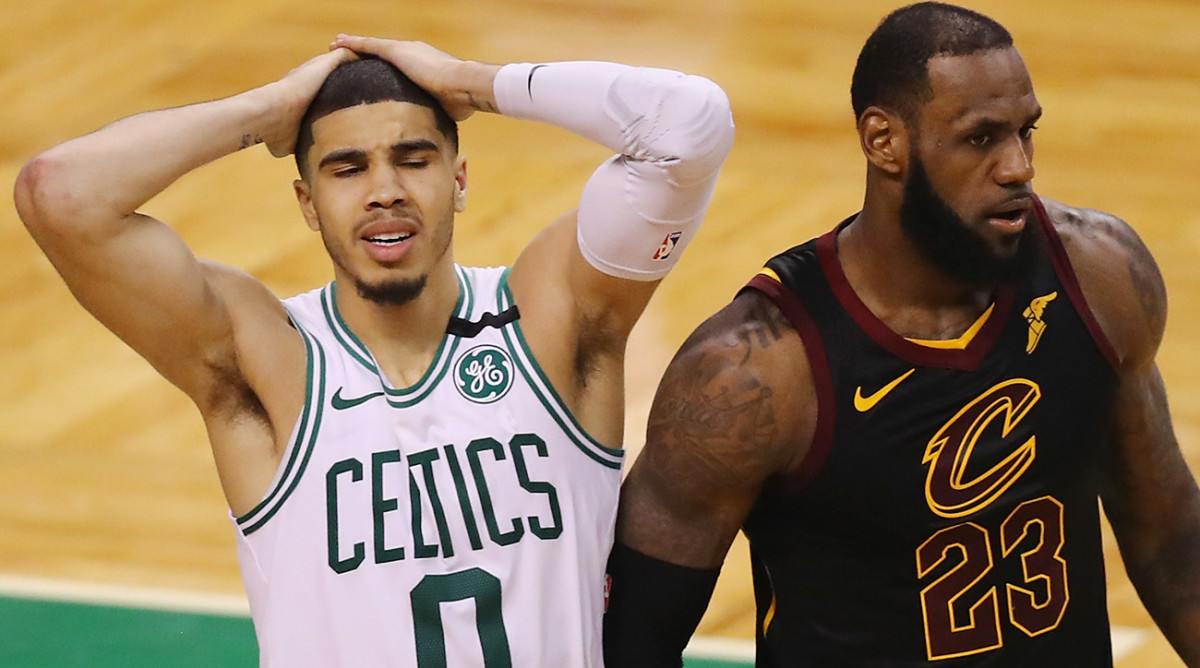The Five Best Teams LeBron Defeated While Ruling the East

Fourteen teams across the NBA took a sigh of relief on July 2, when LeBron James officially ceded his rule over the Eastern Conference, opting to take his talents to Hollywood and join the Lakers. After eight straight trips to the Finals and 15 years of dominance in the East, the window is now finally open for a slew of teams to assume the throne, no longer quaking in the shadows of The King.
LeBron exits the conference following 24 consecutive series wins. He registered nine sweeps in that span, going to a Game 7 just four times. In those series-deciding contests, James averaged 35.8 points per game. Aside from the Heat and Cavs, the Magic and Wizards are the lone Eastern teams to avoid LeBron’s postseason wrath since 2011.
Many of the teams defeated by James stood little chance, minor obstacles to be steamrolled en route to the Finals. But not all were paper tigers. James defeated No. 1 seeds and 60-win squads, finding his way past legitimate title contenders. Without LeBron in the East, two generations of Celtics squads could have reached the Finals, Toronto could still have DeMar DeRozan. And the tragedy of Derrick Rose could have been softened in the Windy City.
So which vanquished LeBron foes had the best chance of lifting the Larry O’Brien Trophy? Here are the best five teams that fell to LeBron during his Eastern Conference reign.
2011-12 Boston Celtics
One season removed from Miami’s collective choke against the Mavericks, LeBron’s legacy looked to be on the line against Boston in the Eastern Conference finals. The Celtics entered Game 6 at home up 3–2 in the series, fresh off a Game 5 win in Miami punctuated by a clutch three from Paul Pierce in James’s face. For the second straight year, it looked as though the Heat's Big Three would fail to capture a title with The King.
What followed was a masterclass performance in Game 6 from James, quite possibly the best of his career. He delivered 45 points and 15 rebounds to silence the Boston crowd, then closed out the Celtics two nights later in a double–digit victory.
The series was a symbolic achievement for James. Boston’s Big Three ousted LeBron in two previous playoff series, including the 2010 Eastern finals, the last game of James’ first stint in Cleveland. And while the 2011-12 Celtics were in their fourth year with the original Big Three and personalities were beginning to collide, they still provided a formidable challenge to James.
No Celtics player averaged more than 20 points per game that season, yet Boston suffocated teams defensively, leading the league with just 98.2 points allowed per 100 possessions. The 2011-12 season marked the peak of Rajon Rondo’s time in Boston, and Ray Allen shot 45% from three, the best mark of his career.
Defeating the Celtics kickstarted a pair of Heat championships and three more appearances in the NBA Finals. However, if it weren’t for a heroic effort in Game 6 from James, Boston very well could have tallied two rings in the Pierce, Garnett and Allen era.

2010-11 Chicago Bulls
Another defensive stalwart, the Bulls led the league in defensive efficiency in 2010-11 while also holding teams to the lowest effective field goal percentage in the league. Even compared to the stingy defenses in Boston and Indiana during this era, Chicago’s was a juggernaut.
Behind Tom Thibodeau’s innovative defensive scheme of loading the strong side and icing the pick-and-roll—a maneuver designed to force ball-handlers away from the middle and toward the baseline—Chicago packed the paint and dared teams to settle for mid-range jumpers. Paired with Chicago’s personnel, the scheme dominated competition throughout the year, holding teams to under 80 points on 12 occassions. Taj Gibson and Joakim Noah formed an elite front line, while Luol Deng locked down guards on the perimeter.
Then there was Derrick Rose. The No. 1 pick entered his third season in 2010-11, vaulting to 25 points per game en route to winning league MVP. Rose was nothing short of electric that season, punishing teams with lightning speed and a generational crossover. The young Rose was nearly unstoppable at the tin, converting 61% of shots within three feet. Chicago was light on threes and reliant on mid-range jumpers, but with Rose at the helm, the Bulls’ anachronistic style paid off.
Despite its regular-season dominance, Chicago’s playoff battle with James was short lived. After claiming a victory in Game 1 of the East finals, the Bulls dropped four straight, averaging just 83 points per game in their four losses.
We know the story from there. Rose missed 197 games over the next three seasons, never looking the same after an ACL tear that robbed him of his 2012-13 season. Rose was supposed to lead the Bulls to their first run of post-Jordan glory years. Instead, Chicago got a season of brilliance, followed by a half-decade of disappointment.
2013-14 Indiana Pacers
Following the trend above with the league’s best defense, Indiana sprinted to 56 regular–season wins in 2013-14, claiming the No. 1 seed in the East. And heading into the conference finals with Miami, Indiana looked primed to claim the Eastern crown and steal it from James.
That year marked a true coming-out party for Paul George, who scored more than 20 points per game for the first time in his career. Coach Frank Vogel surrounded his newfound star with an array of hard-nosed defenders and front-court beef, creating the league’s most formidable defensive front. David West bullied on the block, Roy Hibbert stayed vertical and Lance Stephenson pestered his way to give the Pacers the East’s top regular–season record.
Indiana eventually fell in six games to Miami, one year removed from a seven-game defeat at the hands of Miami. The Pacers crossed the 100-point threshold in just one game that series, failing to surround George—who erupted for 37 points in a Game 5 victory—with the requisite shooting to advance past Miami.
The Pacers would get three more seasons with George, none as successful as the team’s 2013-14 stint. And as Indiana reloads with Victor Oladipo leading the way in 2018-19, the Hoosier state still sits far from its last Finals appearance in 2000. George, Hibbert and Co. ultimately fell short, and it may be a while until Indiana gets that close again.

2017-18 Boston Celtics
The young Celtics that entered the East finals last season would have proven too inexperienced and too banged-up to compete with the Warriors, especially without Kyrie Irving. But even after missing Gordon Hayward for the entire season and Irving for 22 games, these Celtics represented one of the most impressive—and certainly best-coached—teams James ever faced in the Eastern Conference.
No team last season controlled the three-point line on each end of the floor quite like Boston. The Celtics ended their year ranked No. 2 in the league in three-point percentage, and No. 1 in the NBA at defending the three. Their defense moved on a string, never out of place with the subtle genius of Al Horford quarterbacking the unit. Marcus Smart remained one of the league’s toughest defenders—and got handsomely rewarded with a $52 million deal—and meshed well with the length of Jaylen Brown and Jayson Tatum. (Quick side note: Imagine if Boston had paired Kawhi Leonard with this group? That defense could have ranked as one of the best of the decade.)
Boston became one of the few teams that was truly better than the sum of its parts last season, a credit to the wizardry of Brad Stevens. Nobody calls better plays out of timeouts (sorry Doc Rivers, you’ve been surpassed) and Boston’s supporting cast never seems out of its depth. Stevens had his team in the best position to succeed every night.
The cobbled-together cast sans Irving and Hayward took James to the brink, leading in the second half of Game 7 before going on a mini-Rockets run of missed threes and allowing a 35-point effort from James. While 2018 ended in disappointment, the Eastern throne has been abdicated, and the Celtics are now next in line.
2014-15 Atlanta Hawks
Led by Gregg Popovich acolyte Mike Budenholzer, the Hawks morphed into a San Antonio clone in 2014-15, putting on a basketball clinic en route to the East’s top seed. A team with no scorer that averaged more than 17 points per game somehow finished the year ranked No. 6 in offensive efficiency, and an Eastern Conference Player of the Month award split amongst its five starters.
The Hawks magical year peaked in January with a 19-game winning streak in which they outscored opponents by an average of 11 points per game. Sporting Horford and Paul Millsap as fulcrums in the frontcourt, Atlanta cut and screened symphonically, racking up open threes for Kyle Korver and layups for DeMarre Carroll and Jeff Teague. Carroll should give Budenholzer a nice birthday gift each year. After 2014-15 he signed a four-year, $58 million contract, not bad for a guy who had pit stops with four franchises before Atlanta.
Unfortunately for the Hawks, even the best-made machines can short-circuit when taking on LeBron. Like Toronto in the ensuing seasons, the Hawks were overmatched by Cleveland in LeBron’s first playoffs back home, getting swept in four games.
James was his usual self in that series, dominating Game 3 in Atlanta. With the Hawks in desperate need of a victory, James poured in 37 points along with 18 rebounds and 13 assists, burying Atlanta’s chances in the series. Like so many Eastern foes before and after, the Hawks built up an impressive chest of accomplishments in 2014-15, only to have them destroyed by the force of LeBron.
